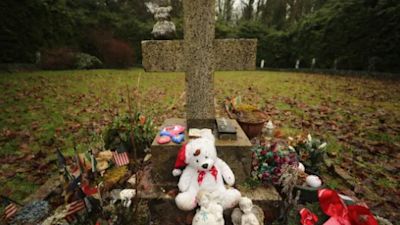Irish mother and baby homes: Report reveals 'dark and shameful' scandal of 9,000 child deaths

The Irish government is expected to apologise after an investigation found an "appalling level of infant mortality" in the country's mother-and-baby homes.
The Children's Minister Roderic O'Gorman said the Mother and Baby Homes report has exposed "a stifling, oppressive and brutally misogynistic culture" in Ireland.
The long-awaited report from the Commission of Investigation has been laid bare more than five years after it was set up, and following several delays.
Survivors of the mother and baby homes will read about the shocking number of children and babies who died in the institutions.
It is understood that up to 9,000 children died in 18 institutions between 1922 and the closure of the last such home in 1998.
Taoiseach Micheal Martin said the report describes "a dark, difficult and shameful chapter of very recent Irish history".
He said: "It holds up a mirror to aspects of our past, which are painful and difficult, and from the present-day perspective, often hard to comprehend."
Mr Martin added: "While this report will obviously have the most direct impact on survivors and their families, it presents all of Irish society with profound questions.
"What has been described in this report wasn’t imposed on us by any foreign power. We did this to ourselves, as a society.
“We treated women badly, we treated children especially badly. We had a completely warped attitude to sexuality and intimacy. Young mothers and their sons and daughters paid a terrible price for that dysfunction.”
The Taoiseach said he will issue a full State apology on Wednesday in the Dail.
The scandal first came to light in 2014 after human remains were found in the grounds of a former home in Tuam, Co Galway. Subsequent investigations established many bodies of children appeared to have been dumped in a disused septic tank.
The commission said the high rate of infant mortality was a “disquieting” feature.
In the years 1945-46, the death rate among infants in mother and baby homes was almost twice that of the national average for “illegitimate” children.
A total of about 9,000 children died in the institutions under investigation – about 15% of all the children who were in the institutions.
The commission said: “In the years before 1960 mother and baby homes did not save the lives of ‘illegitimate’ children; in fact, they appear to have significantly reduced their prospects of survival.
“The very high mortality rates were known to local and national authorities at the time and were recorded in official publications.”
Speaking ahead of its publication on Tuesday, Minister Roderic O’Gorman said it marked "a landmark moment for the Irish state".
He said: “The Commission’s investigation reveals the truth of what happened, within the walls of Mother and Baby Homes and beyond them, to many thousands of women and children.
“Importantly, it also inscribes for posterity, those journeys, those heartbreaks, those truths in the words of those who experienced them first-hand.
“The report makes clear that for decades, Ireland had a stifling, oppressive and brutally misogynistic culture, where a pervasive stigmatisation of unmarried mothers and their children robbed those individuals of their agency and sometimes their future.”
Minster O’Gorman said the publication brought an end to decades of silence around the true horror of Ireland’s Mother and Baby Homes.
He said: “Publication of the Commission’s report is an expression of truth. For decades, Irish society was defined by its silence, and, in that, its complicity in what was done to some of our most vulnerable citizens.
“With its publication, we are affirming that their stories and their truth, will be heard, acknowledged and understood.”
The Government is to consider the report in the “weeks and months ahead”, they said in a statement.
It will aim to develop an action plan centred on eight specific issues: A survivor-centred approach, an apology, access to personal information, archiving and databases, memorialisation, restorative recognition and dignified burial.
The Government has established a counselling support service for survivors, who were given access to it for the first time earlier on Tuesday.
The HSE National Counselling Service (NCS) is available to provide a counselling service for survivors from Monday to Friday between 9.30am and 5pm.
The Government has committed to providing compensation to some survivors.
A bespoke ex-gratia “Restorative Recognition Scheme” has been established to provide financial recognition to specific groups identified by the Commission of Investigation.
The Government has reaffirmed its commitment that people can access personal information contained within the Commission’s records in line with GDPR.
A national memorial and records centre related to institutional trauma during the 20th century will also be developed.
It will serve as a centralised repository for institutional records, and envisages archiving and presenting relevant records and witness testimony by victims and survivors as well as the historical and social context.